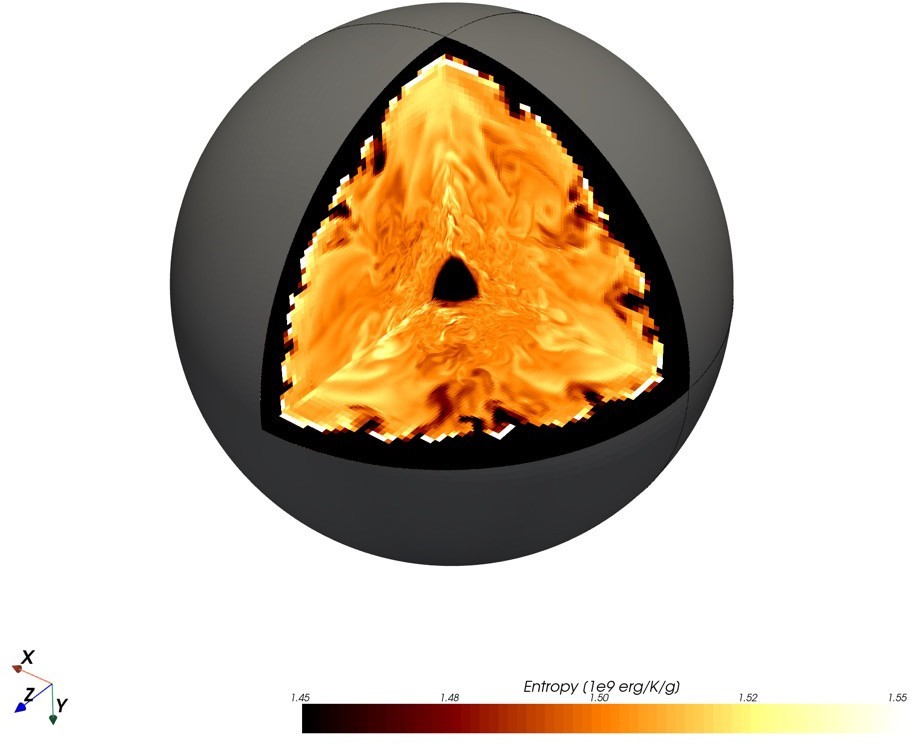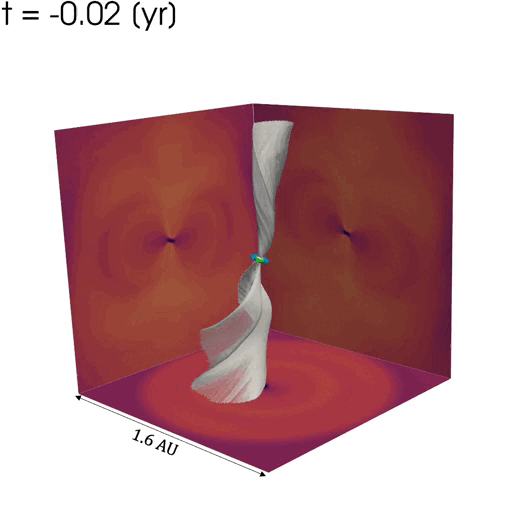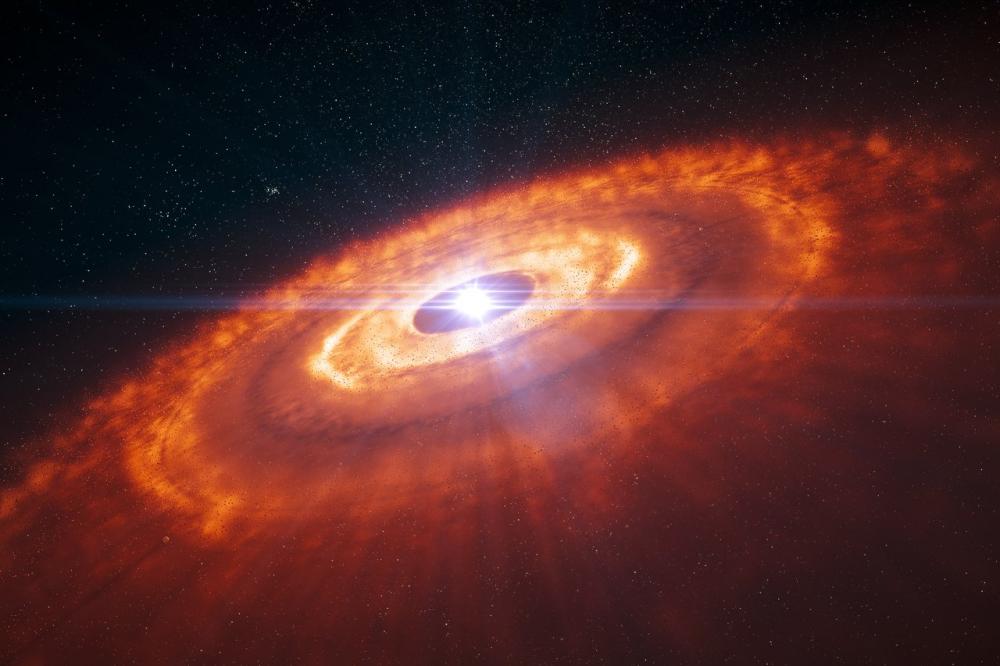A team of theorists from the CEA's Astrophysics Department (DAP), working within the Laboratory for Modeling Astrophysical Plasmas (LMPA), have carried out simulations using the CEA's supercomputers, with the aim of understanding the formation of stars and protoplanetary disks. Months of computational work have enabled us to achieve resolutions never achieved before, revealing new details about the formation of these objects.
The simulations yielded two major results: protostars are turbulent from birth, and protoplanetary disks form from material ejected from the star's surface.
These results have been published in Astronomy & Astrophysics: The birth and early evolution of a low-mass protostar and Formation of low-mass protostars and their circumstellar disks.
The benefits of digital simulations
In our galaxy, numerous clouds of dust and gas collapse in on themselves under the influence of gravity, triggering the phenomenon of star formation. The disk of gas and dust surrounding young stars, known as the "protoplanetary disk" (see Figure 1), then gives rise to planets.
Understanding the evolution of these phenomena provides us with valuable insights into the formation of our own solar system, the Earth and the appearance of life in the Universe.
Unfortunately, it's very difficult to observe the birth of stars and planets, as the vast amount of dust in which young stars are buried masks most of their light. As a result, observing their formation remains difficult, even with powerful telescopes such as the James Webb Space Telescope (JWST), to which CEA has contributed.
This is why astrophysicists use supercomputers to carry out highly complex numerical simulations, which attempt to reproduce these phenomena based on the laws of physics.
These simulations are nevertheless extremely time-consuming. A simulation describing the collapse of the cloud and the first year and a half after the birth of the protostars requires three months of calculations.

Figure 2: Visualization of the interior of a protostar, illustrating the strong turbulence present. The color indicates the entropy of the gas, a measure of whether an area is likely to become turbulent.
Credit: Ahmad et al (2023).
Star formation
In a first study, simulations showed that stars are turbulent from the moment they are born (see Figure 2), which goes against researchers' previous beliefs.
Indeed, it was thought that turbulence in stars was triggered when nuclear fusion began in their central region (around 100,000 years after their birth). Thanks to the very high resolution of the simulations, the researchers were able to observe that instability on the star's surface can generate large-scale turbulent motions when the star accretes the surrounding gas.
This has implications for the evolution of stars, and raises new questions about the origin of their magnetic fields, which require these turbulent motions to trigger a dynamo.
Formation of protoplanetary disks
In a second study, the team took into account rotational effects in the initial cloud to investigate the birth of protoplanetary disks in conjunction with the star (see Figure 3).
For the first time, simulations have shown that the disks form from gas ejected from the star's surface. Indeed, the protostar rotates so fast at birth that some of its gas reaches the breakup velocity, i.e. the speed at which the centrifugal force becomes so strong that the star's gravity can no longer contain the gas.
This considerably changes the paradigm of disk formation, which until now has been studied independently of the star due to computational time constraints.

Figure 3: Simulation of a protostar (green torus) and its accretion disk (blue). The white curves represent the velocity field of the gas entering the star's poles, attracted by its gravity. The background images are cross-sections showing the radiative emission of the gas. In just 10 months, the disk has grown to half an astronomical unit in radius - half the distance from the Earth to the Sun - and its vertical extent is such that it encompasses the star.
Credit: Ahmad et al (2024)
Future simulations
The research team is already running new simulations taking into account the magnetic field within the cloud. This will enable them to study the origin of magnetic fields in stars and how they influence the interaction between the star and the disk.
Contacts : Adnan Ali AHMAD, Matthias GONZALEZ, Patrick HENNEBELLE
Further information: Youtube channel of simulation videos from the DAp team
• Structure and evolution of the Universe › Planets, star's formation and dynamics, interstellar medium
• Institute of Research into the Fundamental Laws of the Universe • The Astrophysics Division (DAp)



